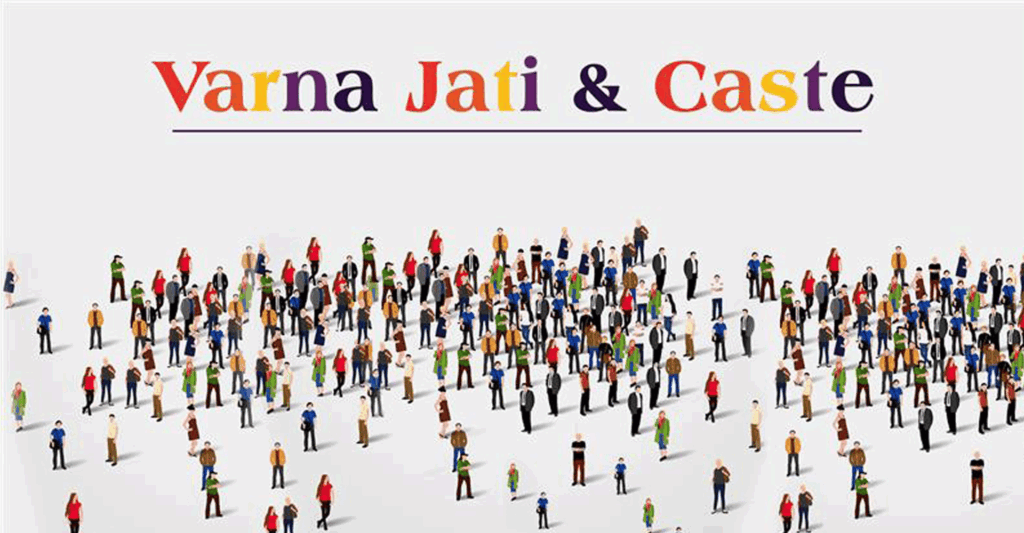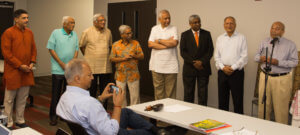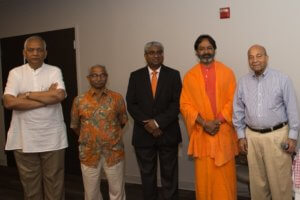
Whenever I mention anything about Hinduism to people, the first thing that comes to mind is the topic of caste, and it is usually judged as something negative. They think of castes as something rigid, both in terms of marriage and occupation. Men are stuck in their line of work, whether as street sweepers or farmers. The young are restricted to marrying within their castes. Lastly, there is lack of social mobility, consigning many to lack of opportunity and a life of poverty. Societies of castes are seen as societies frozen in time.
The problem of varna, jati, kula and caste is a difficult one, and a wide-ranging one. When I started this course, I knew little about the caste system. Now I must answer the question:
How do we deal with criticisms directed against the Hindu community, centered on caste?
PART ONE. VARNA ACCORDING TO THE VEDAS
We begin by starting with the word “varna”, which means “color” in Sanskrit. Why do we begin with the word “varna” – Because this word appears in Vedic literature, and in the Bhagavad Gita, in particular. We begin by identifying the shlokas of the Bhagavad Gita which talk about Varna.
In shloka 4.13, Krishna says:
The four categories of occupations were created by Me according to people’s qualities and activities.
In shloka 18.41, Krishna continues by listing the four Varnas:
The duties of the Brahmins, Kshatriyas, Vaishyas, and Shudras—are distributed according to their qualities, in accordance with their guṇas (and not by birth).
Shlokas 18.42-44 then list the natural qualities of work for the Brahmins, the Kshatriyas, the Vaishyas, and the Shudras. Each of the four varnas has its own unique set of qualities for work.
In Shloka 18.44, in particular, we find that:
Agriculture, dairy farming, and commerce are the natural works for those with the qualities of Vaishyas. Serving through work is the natural duty for those with the qualities of Shudras.
In shloka 18.45-46, Krishna talks of fulfilling one’s own unique set of duties:
By fulfilling their duties, born of their innate qualities, human beings can attain perfection. ….
By performing one’s natural occupation, one worships the Creator …. and …. easily attains perfection.
In shloka 18.47-48, Krishna says:
It is better to do one’s own dharma, even though imperfectly, than to do another’s dharma. ….
One should not abandon duties born of one’s nature, even if one sees defects in them ….
Why do I quote these shlokas at length? Because a close reading of these shlokas reveals that qualities are distributed according to one’s own inherent combination and balance of gunas, and not by birth. In other words, varnas are not inherited by lineage but rather by one’s own unique genetics and temperament at birth. Being born into a particular family (kula) is not what determines varna. One’s inherent abilities and predispositions determine one’s varna. Therefore, if one is born into a family with two doctors as parents, one is not automatically a doctor. If one does not have the inherent capabilities and talents to be a doctor, then that will not be one’s varna. Caste, on the other hand, is the rigid “casting” of one’s dharma according to the varna of one’s parents. The child of those parents has his or her own unique varna, determined by the “random distribution” of one’s genetic make-up.
PART TWO. JATI AS A SOCIOLOGICAL PHENOMENON
We now examine the word “jati”. “Jati” is a Sanskrit term that refers to one’s membership within an extended family kinship group. As an individual, one is a member of a family, with certain parents and perhaps some siblings. This family, in turn, is a member of an extended family group, composed of aunts and uncles, cousins, nephews and nieces, and perhaps other related members. This extended family group may then belong to a larger cluster of extended family groups that form a clan, or a kinship group. In all pre-modern societies, community was more important than the individual, and one’s identity was defined by one’s kinship group and its rules and obligations, its expectations and anticipated benefits. The jati is not confined to Hindu society but occurs in every society that is traditional and pre-modern. In my own Filipino culture, we have the equivalent of jatis, in which, within our town, everyone was related to everyone else, and kinship groups imposed certain expectations and obligations on everyone. Therefore, jati is not the same as caste. Instead, jatis are much more fluid, and the walls between jatis are permeable, whereas in caste systems, the walls are rigid, difficult to penetrate and at great peril, with much shame and condemnation accompanying even minor transgressions. Therefore, we can conclude that jatis are not the same as caste.
PART THREE. CASTE AS BASED ON JATI
When the original European colonizers came upon the South Indian subcontinent, they found a thriving and prospering set of communities, ruled by a combination of Moghul and native rulers.
India was among the richest and culturally diverse economies in the world. The colonizers also found a social structure based on the cooperation and mutual benefit of jatis.
Jatis promoted the health and prosperity of all the members of the group. The various jatis, of whatever set of occupations and customs, existed to mutually interact and support each of the other jatis, so that every jati could get its own fair share or cut off the proverbial “economic pie”, to everyone’s and every jati’s mutual benefit.
The British, who eventually became the “winner take all” beneficiary of the wars among the various colonizers, soon had the “entire pie” of India. They subsequently sought to impoverish India and make all of India into a unified client state under one administration, first under the East India Company, and later, under the governance of the Raj. The British soon discovered that they could use the sociological structure of the jati as a means to gain absolute administrative control of the entire Indian subcontinent by turning the jati system into a caste system. They froze all the jatis in place and anchored all its members into the prison of a caste system. By subverting the prosperous and thriving jati system and freezing it in place so there was no longer any mobility between jatis, the British were able to subvert the entire native political and economic system and bring it to heel by its British overlords. Therefore, the jati system of the Hindus was subverted by the British and deliberately turned into a caste system.
PART FOUR. ENTOMBING THE CASTE SYSTEM INTO CONCRETE
Once the British were able to subvert the Jati system into an imprisoning caste system, the next step in the diabolical scheme was for the British to “cast” the caste system “in concrete”, so that it would become almost impossible to overturn. It did this by instituting the first census in India, which took place in 1865. The first “all-India census took place in 1872. This was regularized in 1881, and a census was taken every ten years from that time forward. Its effect was to enable the Raj to classify the entire population of India and to implement methods for tracking the entire population of India.
With the independence of India in 1947, the caste system was officially embedded into the constitution, and the number of castes, and the membership of each caste, was easily tabulated, although there were many challenges, especially in the definition of what constituted a caste and who really was a member of each caste.
Scheduled castes and tribes were defined, privileges and affirmative action programs were instituted. There were also the effects of reverse discrimination as collateral damage. As a result, the caste system is so embedded in the politics of independent India, such that the political realities of India became deeply defined by caste, and the various caste alliances began to play a decisive role in contemporary Indian politics.
Endnote
All translation passages above are from https://www.holy-bhagavad-gita.org.










